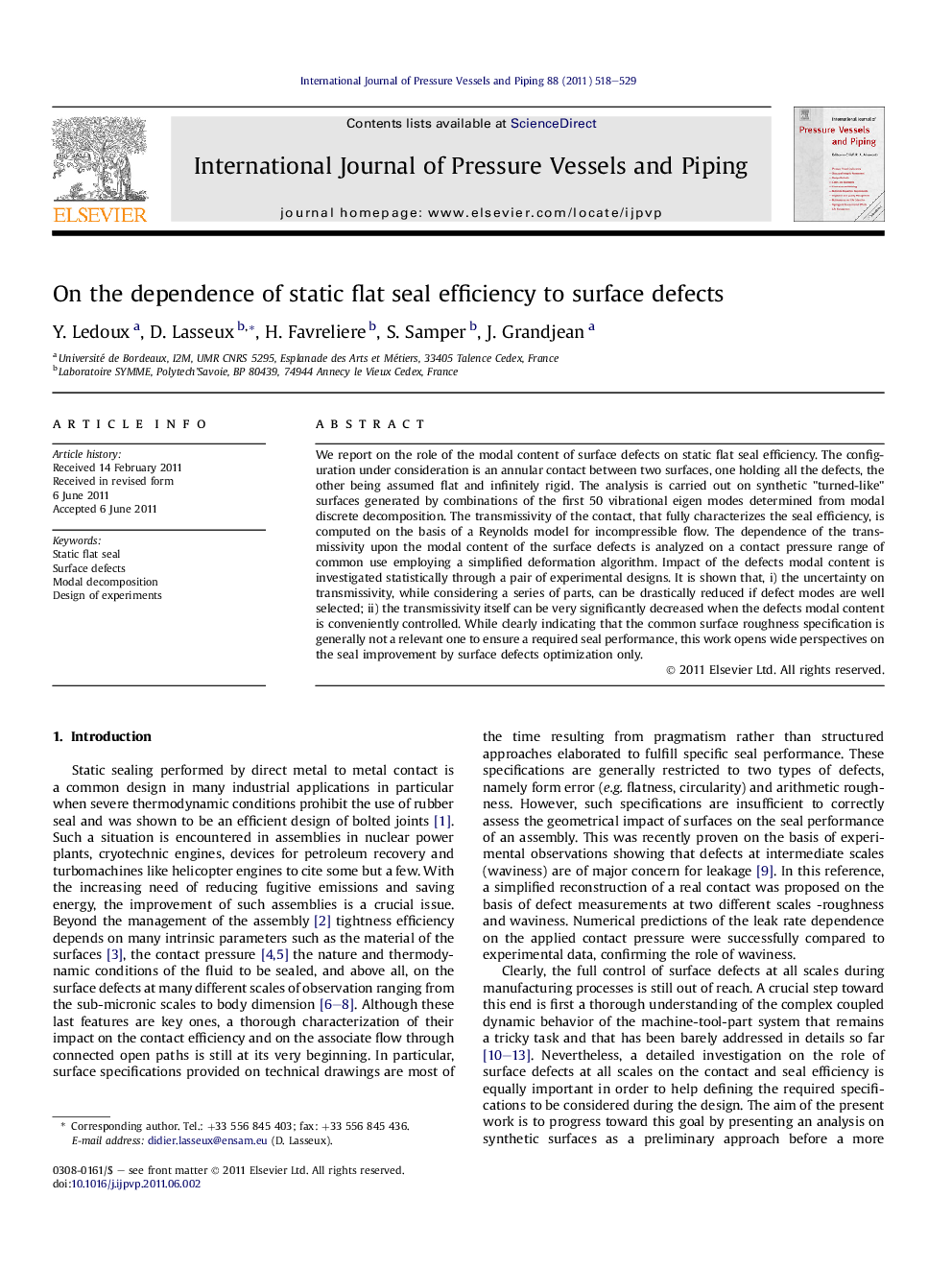| Article ID | Journal | Published Year | Pages | File Type |
|---|---|---|---|---|
| 790786 | International Journal of Pressure Vessels and Piping | 2011 | 12 Pages |
We report on the role of the modal content of surface defects on static flat seal efficiency. The configuration under consideration is an annular contact between two surfaces, one holding all the defects, the other being assumed flat and infinitely rigid. The analysis is carried out on synthetic "turned-like" surfaces generated by combinations of the first 50 vibrational eigen modes determined from modal discrete decomposition. The transmissivity of the contact, that fully characterizes the seal efficiency, is computed on the basis of a Reynolds model for incompressible flow. The dependence of the transmissivity upon the modal content of the surface defects is analyzed on a contact pressure range of common use employing a simplified deformation algorithm. Impact of the defects modal content is investigated statistically through a pair of experimental designs. It is shown that, i) the uncertainty on transmissivity, while considering a series of parts, can be drastically reduced if defect modes are well selected; ii) the transmissivity itself can be very significantly decreased when the defects modal content is conveniently controlled. While clearly indicating that the common surface roughness specification is generally not a relevant one to ensure a required seal performance, this work opens wide perspectives on the seal improvement by surface defects optimization only.
► Computation of contact transmissivity qualifying static seal efficiency. ► Statistical analysis of surface defects modal content on static flat seal. ► Improvement of static flat seal efficiency. ► Significant transmissivity reduction by convenient control of surface defects modes. ► Drastic reduction of transmissivity uncertainty by surface defects modes selection.
